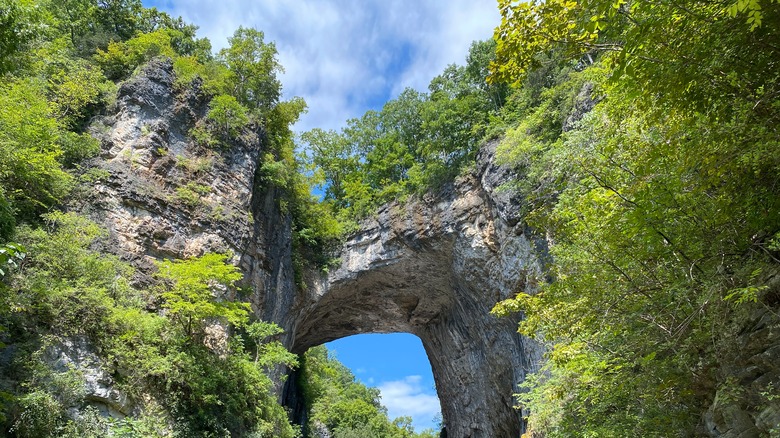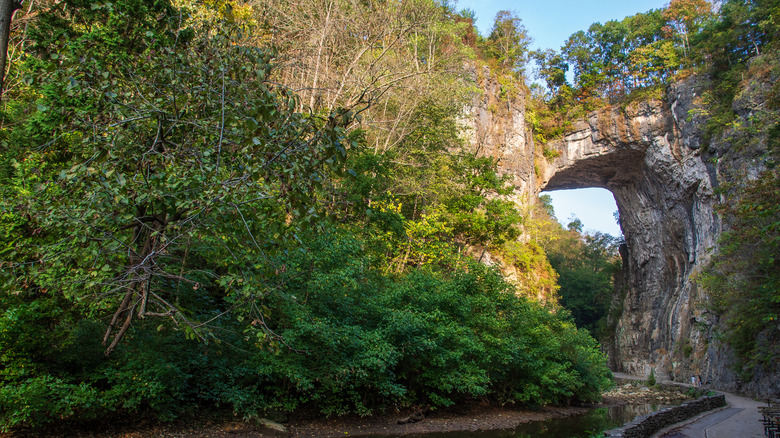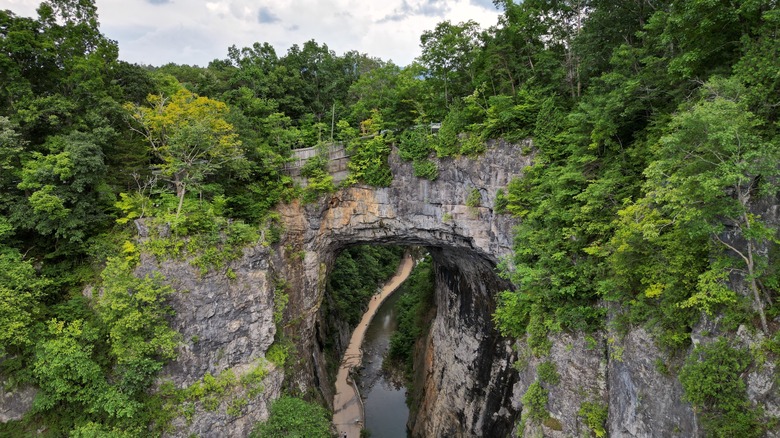Virginia’s illustrious Shenandoah Valley has long been one of the top mountain escapes on the East Coast. Located along the preeminent Blue Ridge Mountains of Appalachian, the Shenandoah Valley stretches more than 100 miles along the Virginia-West Virginia border, through the drainage basin of its namesake Shenandoah River. The region’s intricate collection of rolling mountain peaks, breathtaking valleys, and lovely forests has long made it Virginia’s premier outdoor destination, for all sorts of travelers. For example, the scenic paradise of Shenandoah National Park is one of America’s most accessible national parks thanks to its well-maintained scenic drives and disability-friendly infrastructure. But even outside of its famed national park, the Shenandoah Valley has plenty of other, lesser-known attractions to share. Arguably the best of these is the one-of-a-kind Natural Bridge State Park.
As per its name, Natural Bridge State Park’s main feature is a towering natural limestone “bridge” that most visitors would be forgiven for assuming was built by humans. But for as much as this prominent rocky arch resembles an artificial bridge, its origins are entirely natural. A mere 40-minute drive from the city of Roanoke, and about two to three hours from Richmond and Washington, D.C., Natural Bridge State Park is a conveniently located preserve of one of the East Coast’s greatest wonders. As if that wasn’t reason enough for a trip, the state park also provides exceptional views of the mountains and forests of the surrounding Shenandoah Valley, plus great opportunities to explore one of Virginia’s loveliest rivers.
Virginia’s Natural Bridge is a secret wonder of the Appalachians
Natural rock bridges, though rare, are not exactly unheard of in many of America’s preeminent outdoor destinations. In addition to the famed arches of Utah’s appropriately named Arches National Park, there are also unique spectacles like the world’s largest natural travertine bridge at Arizona’s Tonto Natural Bridge State Park. But most of America’s notable natural bridges are located in the complex desert landscapes of the American West. Much rarer are monumental natural rock bridges in the East Coast’s temperate forests. This is what makes Virginia’s tremendous natural bridge stand out — not only is it a unique sight in the Shenandoah Valley, but its impressive dimensions would fit right in with the iconic natural bridges out West.
Virginia’s natural bridge is about 215 feet high and 90 feet wide, more than large enough for hikers to wander directly underneath the main arch, or even drive over the bridge via Virginia’s Route 11, which goes directly over the main rock arch. While the bridge itself is a sight to behold, the park’s 1,500 acres contain ample forests, mountain views, and scenic river walks.
Just below the bridge is the lovely Cedar Creek, a small but charming tributary of Virginia’s famed James River. Though Cedar Creek looks somewhat modest today, it was this very waterway that carved through the ancient limestone of the surrounding mountains to create the park’s towering natural bridge. As impressive as this geological history is, the natural bridge also features in American history. In 1774, the bridge and its surrounding acres were purchased from King George III by none other than Thomas Jefferson. This distinction was enough to earn the natural bridge a spot on the National Register of Historic Places.




